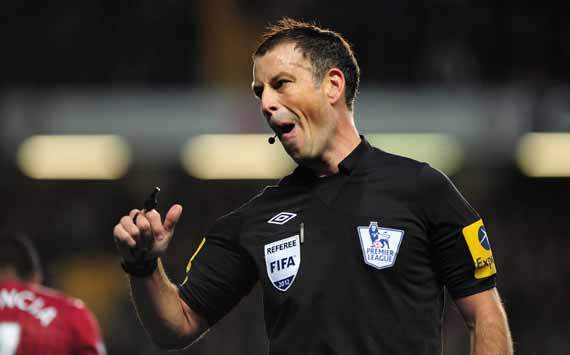BARRING any other devel opment of equally impactful effect,
the great event of the year 2012 for Nigerians would probably be the
floods that submerged many communities across the country, forcing a
rude awakening about the reality of climate change and Nigeria’s share
of this global phenomenon.
Which is ironic in one sense more than any other, for when President
Jonathan travelled to Rio de Janeiro to attend the Earth Summit, known
as Rio+20, in June, many had criticized him for paying attention to “an
irrelevant subject.”

Travellers
wading through East-West road cut-off by flood as captured by
Vanguard’s Akpokona Omafuaire during a tour of the road by the
South-South Regional Editor of Vanguard, Emma Amaize recently.
The principal lesson lies in how Nigeria shares with the rest of the
world, the increasing challenge of climate change and its consequences,
described in the Rio+20 document as “an immediate and urgent global
priority.”
See more photos of flooded East-West road
The floods were caused, according to the experts, by excess rainfall,
which resulted in the overflooding of Rivers Benue and Niger and their
tributaries, from Taraba, to Adamawa, Kogi, all the way to the states of
Southern Nigeria.
Natural disasters had always seemed to the average Nigerian like
something that affects other people, and seen on CNN, and if there had
been any knowledge of floods, it was regarded as something rare,
occurring as a marginal reminder of the Biblical Flood.
Conflict between man and nature
But this year, the floods reminded us all of how vulnerable our lives
have become, and the sameness of both the rich and the poor in the face
of natural disaster.
Houses were submerged, farmlands were flooded, persons were
displaced; the rich and the poor cried. This conflict between man and
nature playing out on our shores, underscored the pivotal place of
environmental challenges in the unmaking of human habitats.
With water, an indispensable resource unleashing its power, the
ordinariness of every man was exposed. Steven Solomon writes sentiently
in his book
Water: The Epic Struggle for Wealth, Power, and Civilization (2010),
that “by grasping the lessons of water’s pivotal role on our destiny,
we will be better prepared to cope with the crisis about to engulf us
all.” That pivotal role is ambiguous.
We had failed to pay attention to this. In many of the affected
communities, houses had been built on riverbeds, along flood plains, and
reclaimed land, and for decades, persons had gotten used to living in
those places, naturally and successfully, having no reason whatsoever to
imagine the kind of tragedy that crept upon the land this year.
When the floods finally recede, many of the affected houses would no
longer be habitable: adjustments have to be made by both people and the
authorities.
In the meantime, we can look back, with pleasure, on the quality
leadership that was demonstrated in managing the effect of the floods
and in providing immediate relief for the affected persons.
The incident brought government closer to the people; it highlighted
the value of strategic institutions such as the National Emergency
Management Agency, which deployed human and material resources
nationwide, and worked with other agencies such as the Red Cross, the
Nigerian Security and Civil Defence Corps and the state governments to
ameliorate the people’s suffering.
Deservedly, NEMA has received fulsome praise for its efforts.
Needless to state that NEMA and other government agencies were
responding to a strong charge from the very top, for as the flooding
occurred, President Jonathan immediately directed that all relief
measures should be mobilized to assist the states and the people. The
moment called for leadership. And the President took charge as expected.
He also promptly set up an Inter-Ministerial Technical Committee led
by the Minister of Environment to go round the country to assess the
extent of the floods. That Committee presented its interim report to the
President at a meeting attended by state governors and the leadership
of the National Assembly.
The following day, President Jonathan addressed the nation and
announced a 17.6 billion Naira relief fund for all the states, which was
immediately made available for their use.
All the affected states had set up displaced persons’ camps and were
actively providing feeding, accommodation and health services. Further,
President Jonathan constituted a National Flood Relief and
Rehabilitation Committee co-chaired by Alhaji Aliko Dangote and Mr.
Olisa Agbakoba, to raise funds to complement government’s efforts in
assisting the flood victims, and to mobilise the general public to
support the initiative. With these steps, the administration had pushed
the management of the flood crisis to the level of high national
priority, generating nationwide empathy in the process.
In addition, President Jonathan announced that he and Vice President
Namadi Sambo will visit the affected states. In the week that followed,
Nigerians saw their President, without his trademark attire.
This had given way to simple shirt and trouser, rolled up sleeves,
and a face cap. The President travelled to Kogi, Rivers, Delta, Anambra,
Bayelsa, Taraba, Adamawa, and Benue states. He went from one camp to
the other, identifying with the people, empathizing with them. He
listened to their stories. He shared their agony. His own village in
Bayelsa had also been submerged. When he went home to his village,
Otuoke, he met his compound flooded up to chest level.
In Kogi, he was told that a man who took a loan for his farm, and had
lost everything, contemplated suicide. Everywhere he went, the
President took a message of hope, advising the victims not to commit
suicide, but to remain confident that with government on their side,
there is hope.
Together with the state governors, he thanked the relief agencies and
all the persons who had come to the rescue of the victims. He didn’t
listen to official versions alone; he personally invited spokespersons
of displaced persons to lay their concerns before him. There had been a
baby boom in many of the camps: women who had given birth in the camps
brought their babies to the President.
He carried the babies, and posed for photographs with them and their
mothers, the most impressive being a photograph of the President with
four new-born babies and their mothers at the Makurdi camp.
But the visit to the various camps was not without the touch of
occasional comedy. In one of the states for example, one gentleman who
felt that the spokesperson for the victims did not convey their feelings
fully enough insisted on having a say in the matter. Some officials
tried to prevent his intrusion.
But when it was President Jonathan’s turn to speak, he collected the
microphone and took it straight to the agitated fellow. Speak! It was
with much ceremony that the man proceeded to narrate how people who were
not affected by the floods were thronging the displaced persons’ camp
to collect food meant for the victims and how this was already causing
problems.
He wanted the authorities to share the money that had been sent to
the states by the Federal Government, directly among the victims in
order to shut out non-victims who want “to shorten their ration”.
President Jonathan deplored the cruel activities of those seeking to
profit from other people’s misfortune, but patiently, he told the man
that he had not come to discuss food, because all the state governments
according to reports were doing a lot to assist the victims, and nobody
would die anyway in any of the camps because of food.
While government is providing necessary short term relief, the
Administration is more concerned about how the people will manage their
lives after the flood, how to prevent the outbreak of any kind of
epidemic, how to rehabilitate the affected persons and how to prevent a
similar tragedy in the future.
Indeed, there has been so much pre-occupation with the “sharing”of
either food or money, and journalistic nitpicking over the ecological
fund, whereas the Jonathan administration’s response to the crisis is
much broader and comprehensive comprising short, medium and long-term
measures.
From the outset, the President had ordered an informed,
multi-perspective analysis of the incident and its aftermath to guide
interventions.
A mapping of the affected areas has been done, the nature and extent
of the damage has been properly studied; engineers have been dispatched
to the states to assess the infrastructural impact of the floods.
On all his visits to the states, President Jonathan was accompanied
by the House Committee Chairman on Environment, Hon. Uche Ekwunife and
the chairman of the Senate Committee on Special Duties, Senator Clever
Ikisikpo.
He was also joined by the Director of Army Engineering, whose
department had gone round to assess the damage and was providing the
President with preliminary engineering analysis. Bridges linking
communities collapsed, roads were washed away. Public infrastructures in
the affected communities need to be fixed, and the military was also
called in to help.
In the wake of the floods, fears were expressed about the possibility
of drought in the coming year. President Jonathan promptly directed the
Federal Ministry of Agriculture to intervene, and a National Flood
Recovery Production Plan was immediately launched.
Under this plan, the Federal Government is providing high-yielding,
flood-resistant seedlings and fertilisers for farmers, technical
assistance and other incentives to boost the national yield, as well as
releases from the national strategic grains reserves. The Ministry of
Agriculture has since allayed fears of a food crisis, noting that the
bulk of the country’s farmlands remain unaffected.
Similarly, the Federal Ministries of Works, Water Resources, Health
and the Environment have been directed to design other relief plans. In
all of these, the Federal Government is collaborating with the state
governments.
The Ministers travelled to each state ahead of the President with
their teams, and they were on the ground to provide necessary
information. In the few states where there is no State Emergency
Management Agency, President Jonathan has asked NEMA to work with the
state governments to set up such agencies to further strengthen the
country’s preparedness to tackle emergencies.
When the floods occurred, there were also reports of a certain
Cameroonian connection to wit that due to excess volume of water caused
by excess rainfall, the Cameroonian authorities had released water from
Lagdo dam; some other dams in Nigeria also had to be emptied raising the
hydrological level in many places.
Fact: the floods were predicted as far back as March by the relevant
agencies. But we all took the predictions for granted. We are all such
lucky people we often imagine that the worst cannot happen here.
Even when government advises the people accordingly about likely
dangers, the natural response is to resist official wisdom and insist
that in a democracy, the people have a right to everything including
self-immolation.
To prevent artificial contributions to the effect of climate change,
nonetheless, the administration has taken the additional step of
reviewing available infrastructure that can serve the purpose.
To this end, President Jonathan has directed that the dredging of
Rivers Niger and Benue be expedited. He has also visited the Kashimbila
Dam in Takum LGA, Taraba State, which is under construction.
The buffer dam is designed to provide power and irrigation services,
but more importantly to hold water released from Lake Nyos in Cameroon
with a holding capacity of 18 million cubic litres. There are plans
also, as part of long term intervention measures to build dams on the
River Benue as well as dykes in identified vulnerable plains.
President Jonathan has brought to the delivery of all these measures,
passion, action and commitment. He asked the engineers in charge of the
Kashimbila Dam when they think they are likely to complete the dam.
“2013 sir!” He told them he hopes the promise will be kept because the
nation cannot wait.
The promptitude with which he has personally attended to the flood
crisis has been commended by many an observer; the actual truth is that
this is the nature and character of the man that Nigerians chose as
their President in April 2011.















































